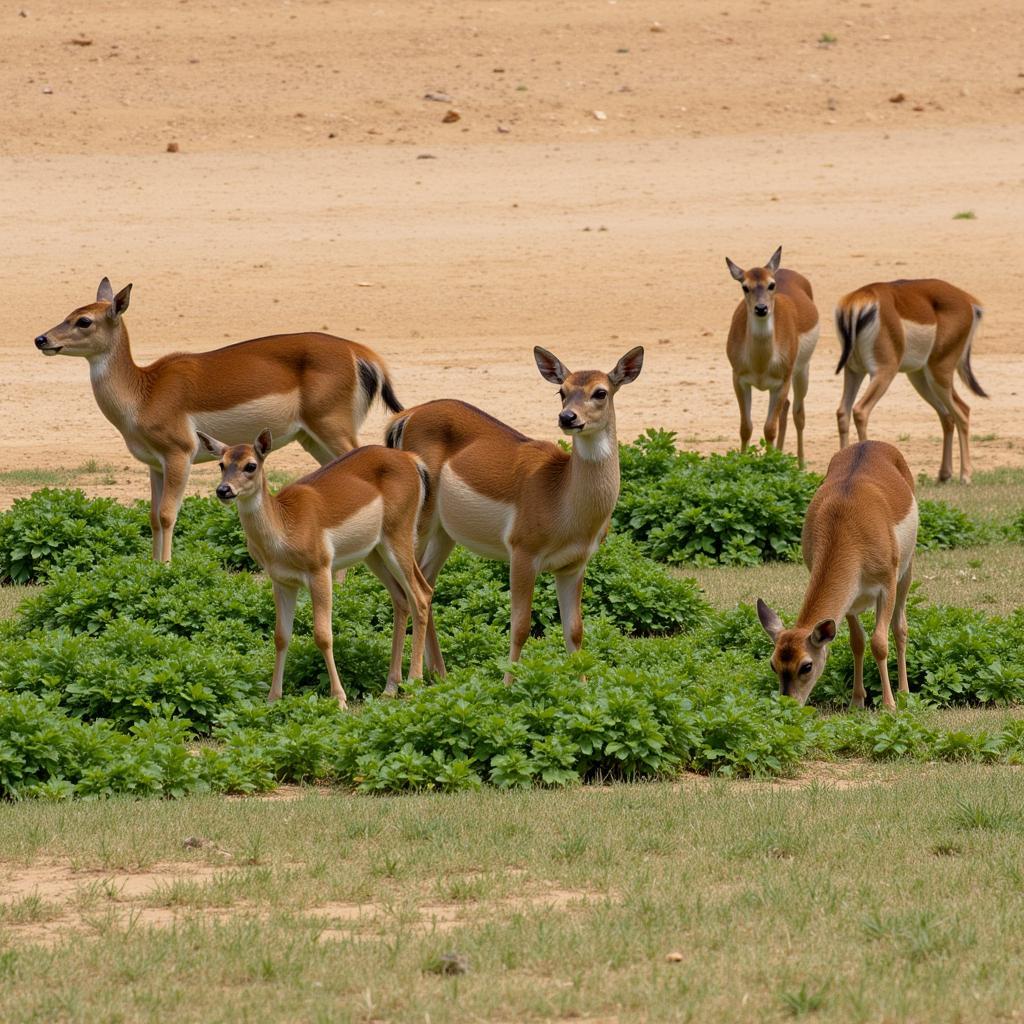For many hunters and wildlife enthusiasts, establishing a thriving food plot is an essential part of land management. While fertile loam soils might seem ideal, the reality is that many regions, particularly here in [insert relevant geographic location, e.g., the Southeast], are dominated by sandy soil. Don’t despair! Growing a successful food plot in sandy soil is entirely achievable with the right knowledge and techniques.
Understanding the Challenges of Sandy Soil
Before we dive into solutions, let’s understand why sandy soil presents unique hurdles for food plots. The very nature of sand — its large particle size — means it doesn’t hold water or nutrients as effectively as clay or loam soils. This can lead to:
- Rapid Drainage: Water whisks through the soil, leaving your plants thirsty and potentially leaching away vital nutrients.
- Nutrient Deficiency: Sandy soils are often deficient in essential nutrients like nitrogen, phosphorus, and potassium, crucial for robust plant growth.
- Temperature Fluctuations: The quick drainage of sandy soil can make it prone to extreme temperature swings, stressing plants, especially seedlings.
Choosing the Right Plants for Food Plots in Sandy Soil
The key to thriving Food Plots In Sandy Soil lies in selecting plant species that are well-adapted to these conditions. Opt for plants known for their drought tolerance, minimal nutrient requirements, and ability to handle temperature fluctuations. Some excellent choices include:
- Buckwheat: This fast-growing annual thrives in poor soil conditions and is a magnet for deer and other wildlife. For more on incorporating buckwheat into your food plot strategy, check out our dedicated article on buckwheat for food plots.
- Lablab: This heat and drought-tolerant legume fixes nitrogen into the soil, improving fertility over time. Learn more about establishing a lablab food plot on our site.
- Cowpeas: Another nitrogen-fixing legume, cowpeas are valued for their resilience in sandy soils and their appeal to deer, turkey, and other game.
 Deer Grazing on a Food Plot in Sandy Soil
Deer Grazing on a Food Plot in Sandy Soil
Tips for Successful Food Plots in Sandy Soil
1. Soil Testing and Amendment
- Know Your Soil: Start with a soil test to determine its pH level and nutrient content. This will guide your amendment strategy.
- Organic Matter is Key: Amending sandy soil with generous amounts of organic matter, like compost or well-rotted manure, is essential. Organic matter improves soil structure, water retention, and nutrient availability.
2. Planting and Timing
- Proper Planting Depth: Plant seeds slightly deeper than you would in heavier soils to ensure they reach adequate moisture.
- Timing is Everything: Consider planting drought-tolerant species in early spring or late summer to take advantage of cooler temperatures and potential rainfall.
3. Watering Strategies
- Water Deeply, Less Often: When you do water, water deeply to encourage roots to grow downward, seeking moisture.
- Mulching Magic: Apply a layer of mulch around your plants to help conserve soil moisture and suppress weed growth.
4. Weed Control
- Stay Ahead of Weeds: Weeds compete with your food plot plants for precious water and nutrients. Implement a consistent weed control strategy that aligns with your chosen plant species. This might involve hand-pulling, cultivation, or the careful use of herbicides. For insights on the timing of planting after herbicide application, refer to our guide on how long after spraying roundup can i plant food plot.
Long-Term Soil Improvement
- Cover Crops: Consider planting cover crops like rye or clover during the off-season. Cover crops help prevent erosion, improve soil structure, and add valuable nutrients.
- No-Till Methods: Explore no-till planting techniques, which minimize soil disturbance and promote beneficial soil organisms.
“Working with sandy soil is all about playing the long game,” says wildlife biologist Dr. Sarah Jones. “By consistently building soil health and choosing resilient plant species, you can create food plots that thrive even in challenging conditions.”
 Signs of Healthy Growth in a Sandy Soil Food Plot
Signs of Healthy Growth in a Sandy Soil Food Plot
Conclusion
Creating a successful food plot in sandy soil requires understanding its limitations and embracing the strategies that can turn those limitations into advantages. By choosing the right plants, amending your soil diligently, and employing smart management practices, you can create a thriving food plot that attracts and nourishes wildlife for years to come. For more specific guidance on choosing the ideal plant varieties for your sandy soil food plot, explore our detailed article on the best food plot for sandy soil, tailored for [your geographic region, if applicable].